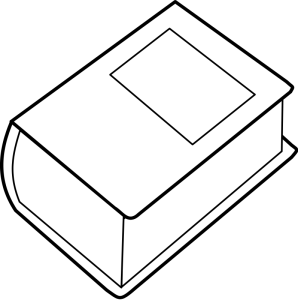Have you ever been writing down an idea and then hit the proverbial brick wall that stops you dead in your tracks and completely derails the process? If not, count yourself lucky. Happens to me far too often. To the point in fact where I’ve had to develop some coping mechanisms to deal with it. In this post, I’d like to focus on three of the ways I’ve learned to turn these walls into speed bumps: Breadcrumbs, Dictionary Dives, and Thesaurus Thumps.
We’ll start with “Breadcrumbs” because the other two ideas can be used to follow up on those later. When I’m pounding away and suddenly am at a loss for the next word, I’ve discovered that I can a) completely derail myself for hours or days by trying to figure it out immediately or b) put in a marker of some sort with a few key ideas and keep on chugging away. Option (b) sounds like a much better approach to me, though I probably go with (a) more often than I want to admit.
The basic technique works something like a Mad Lib. I put in a blank with a few words beneath it or put the keywords in brackets or parentheses and then move on to the next thought as quickly as possible to not lose the train of thought. Later on during the editing or revising phase I can find these little breadcrumbs and hunt for the correct term, idea, or concept to fill it in.
Let’s take the following passages as examples: “…As the party slowly works down the hall, they may hear (with a decent Perception check) the [slimy, squishy, blubbery] noises of something up ahead…” or “A small rusty metal cannister has been placed carefully on the shelf between two ancient tomes. Inside you find the [sand-like, dust-like, shavings-like] remains of something of indeterminate origin. On the can is a small note with lettering smudged and worn to the point where all you can read is ‘add water.'”
As you can see, I mostly use it for descriptive words, but it can be a handy technique for just about anything. Need a name? Tag it. Need a place? Tag it. Need a thing? Tag it!
So what do you do with the tags when it’s all said and done? Well, that’s up to you of course. I use those breadcrumbs to remind me what I was looking for and then use a couple of different techniques… Dictionary Diving and Thesaurus Thumping.
There are two variations of “Dictionary Diving” I use frequently. Rarely do I actually open a physical dictionary, though I have one by my desk at all times for just such an emergency. It’s far too easy to hit the web and go to Dictionary.com to do my exploration. It involves taking the keywords from the breadcrumb, typing them into the search field in my favorite dictionary website, and seeing what comes up. If you feel like living dangerously you can even do a raw Google search with your terms to see what comes up.
If I try this approach with my two breadcrumbs exactly as I wrote them in the passages I wrote earlier, I end up with nothing useful. I can’t simply put in “slimy, squishy, blubbery” or “sand-like, dust-like, shavings-like” and expect good results. Think of this as like spelunking where we’re exploring different dark caves in a network, finding a few dead-ends, and doubling back to find something more cool or useful.
So let’s go down the rabbit hole and I’ll show you the process. In this case, if I try “slimy” I end up with the basic definitions and an encyclopedia entry, Nothing very useful. But if I click on the linked term “slime” I find the definition “any ropy or viscous liquid matter, especially of a foul kind.” Viscous is a great word, but doesn’t really apply to sound, so I’ll write it down and set it aside for now. Like with a good prestidigitator performing a card trick, this is a bit like being asked to “pick a word, any word” and stuffing it back into the book so we can pull it out later.
If I don’t end up with anything I like out of the dictionary, I can use the same technique with my favorite online or offline thesaurus. If I look for “sand” at thesaurus.com, I end up with a variety of great terms to play with: ashes, filings, granules, flakes, grit, powder, dust, gravel, or soot. And I can play with various words and combinations, exploring different paths until I end up with a word or phrase I like.
In this case, I may end up with something like “they see thin, viscous trails along the walls and floor and hear something squishing down the corridor ahead” and “the gilings and granules of some ancient thing once whole, now ground to pieces…” There’s endless varieties and this exploration of words not only helps any immediate word choice problems, but expands your vocabulary for later projects. I’m constantly learning new words and new uses for old words.
Hopefully these techniques help you in your own writing!
One last piece of advice… Remember that sometimes it’s not about finding the exact word YOU need, but about finding the right word that expresses what you’re trying to say to your READER! It can be very easy to be so focused on finding the perfect word that you get lost along the way, never to return. If that happens often, I recommend you set a timer and give yourself 5 minutes to poke around. If you still don’t have what you need, leave a more detailed breadcrumb with some of the choices you investigated, and keep moving. Don’t get so deep you forget why you were there in the first place. 🙂
Brian “Fitz” Fitzpatrick is a Software Engineer who manages (or is that mangles) Game Knight Reviews and tinkers with writing game materials via his Moebius Adventures imprint. When he’s not writing about gaming, he’s actually gaming or at least thinking about gaming in some capacity. During the non-writing, non-gaming time he’s likely trying to keep up with his wife and two daughters or wrangling code for a living!




